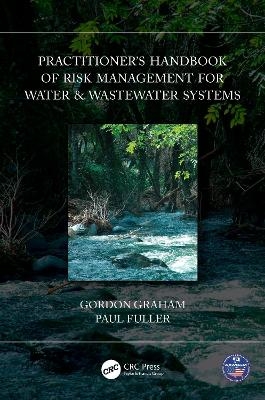
Practitioner’s Handbook of Risk Management for Water & Wastewater Systems
Seiten
2024
CRC Press (Verlag)
978-1-032-13413-0 (ISBN)
CRC Press (Verlag)
978-1-032-13413-0 (ISBN)
Centering on organizational risk management, Practitioner’s Handbook of Risk Management for Water & Wastewater Systems provides the investigative tools for risk assessments and risk/frequency matrixes to effectively recognize and prioritize the thousands of risks facing professionals working in the water and wastewater industry.
Real risk management is predicated on the eventuality of human erraticism and therefore necessitates the design of resilient systems, such as control measures, policies, procedures, processes, rules, checklists, and protocols, to protect organizations against unpredictability. However, these systems aren’t enough to prevent tragedies, they must be paired with an organizational culture that drives employee understanding, adherence, questioning, and enforcement of these systems. Success is conditioned on this interdependent relationship, meaning employees do the right thing, the right way every time, as they unequivocally support the underlying rationale of their organizational systems, mission, and purpose. This dynamic, inculcated way of thinking is intrinsic to high-reliability organizations and should be the aspiration of all executives, managers, and supervisors. Authors Gordon Graham and Paul Fuller impart a wide range of practical information on resilient systems- as these thoughtfully designed protocols, kept up-to-date and properly implemented, serve to minimize organizational risk in the water and wastewater industry.
Features:
Offers guidance for organizations to maximize service, enhance safety, and minimize liability.
Presents fundamental background on risk, systems, risk management, as well as factors leading to industrial tragedies and how to avoid or mitigate them.
Includes practical examples to demonstrate the necessary steps to transform a water facility into a highly reliable and safe organization.
Centering on organizational risk management, Practitioner’s Handbook of Risk Management for Water & Wastewater Systems provides the investigative tools for risk assessments and risk/frequency matrixes to effectively recognize and prioritize the thousands of risks facing professionals working in the water and wastewater industry today.
Real risk management is predicated on the eventuality of human erraticism and therefore necessitates the design of resilient systems, such as control measures, policies, procedures, processes, rules, checklists, and protocols, to protect organizations against unpredictability. However, these systems aren’t enough to prevent tragedies, they must be paired with an organizational culture that drives employee understanding, adherence, questioning, and enforcement of these systems. Success is conditioned on this interdependent relationship, meaning employees do the right thing, the right way every time, as they unequivocally support the underlying rationale of their organizational systems, mission, and purpose. This dynamic, inculcated way of thinking is intrinsic to high-reliability organizations and should be the aspiration of all executives, managers, and supervisors. Authors Gordon Graham and Paul Fuller impart a wide range of practical information on resilient systems- as these thoughtfully designed protocols, kept up-to-date and properly implemented, serve to minimize organizational risk in the water and wastewater industry.
Features:
Offers guidance for organizations to maximize service, enhance safety, and minimize liability.
Presents fundamental background on risk, systems, risk management, as well as factors leading to industrial tragedies and how to avoid or mitigate them.
Includes practical examples to demonstrate the necessary steps to transform a water facility into a highly reliable and safe organization.
Centering on organizational risk management, Practitioner’s Handbook of Risk Management for Water & Wastewater Systems provides the investigative tools for risk assessments and risk/frequency matrixes to effectively recognize and prioritize the thousands of risks facing professionals working in the water and wastewater industry today.
Introduction. Real Risk Management. Ten Families of Risk. Five Concurrent Themes for Success. Organizational Risk Management. Comprehensive Background Investigations. Meaningful Performance Evaluations. Supervisory Performance. Employee Discipline. Job-Based Harassment. Ethical Decision Making. Conclusion. Addendum.
| Erscheinungsdatum | 04.11.2021 |
|---|---|
| Zusatzinfo | 28 Line drawings, color; 14 Halftones, color; 42 Illustrations, color |
| Verlagsort | London |
| Sprache | englisch |
| Maße | 156 x 234 mm |
| Gewicht | 440 g |
| Themenwelt | Technik ► Umwelttechnik / Biotechnologie |
| ISBN-10 | 1-032-13413-5 / 1032134135 |
| ISBN-13 | 978-1-032-13413-0 / 9781032134130 |
| Zustand | Neuware |
| Haben Sie eine Frage zum Produkt? |
Mehr entdecken
aus dem Bereich
aus dem Bereich
Anleitung zur Abflussmessung in Fließgewässern
Buch | Softcover (2024)
Springer Vieweg (Verlag)
44,99 €
Kommentar der DIN 15905-5, LärmVibrationsArbSchV und …
Buch | Softcover (2023)
DIN Media (Verlag)
58,00 €
Buch | Softcover (2023)
DIN Media (Verlag)
75,40 €


